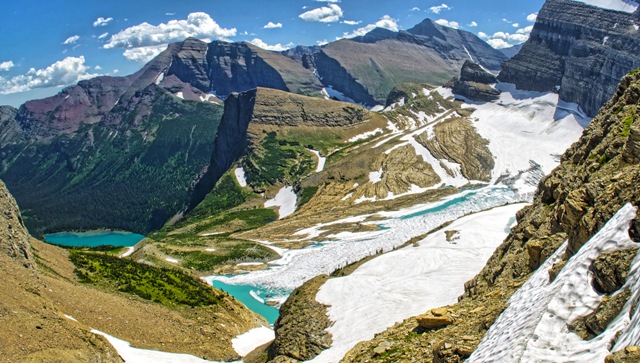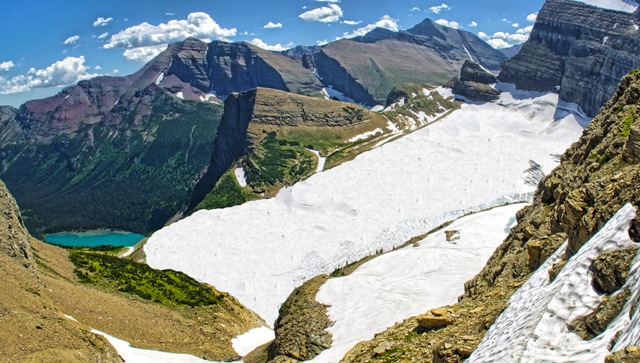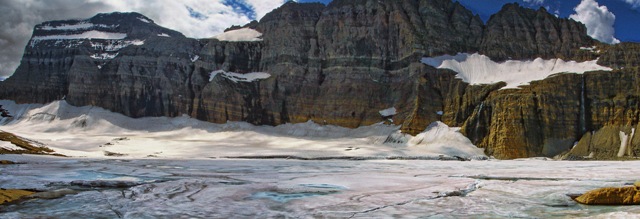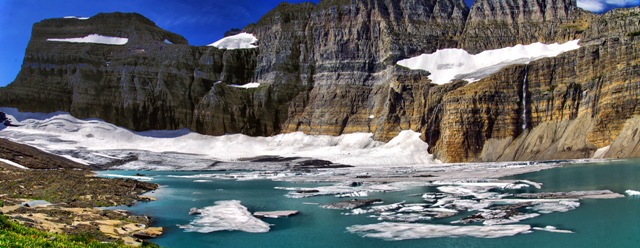Climate Change
07-01-2017
Writer(s): Dan Shepardson
I am compelled to blog about climate change this month given President Trump's decision to withdraw the United States from the Paris climate accord. This was a sad day for the climate, environment, and for future citizens that will be impacted by global warming. Like many others I was not surprised by the President's decision because the President sees the environment through a capitalistic lens. A perspective that views the environment as a natural resource from which commodities are extracted and used for money, profits, and jobs. Through this lens, scientific data about climate change and the environment are not valued and at best are tangential to decision making. But I digress.
For me climate change is personal in that one of my favorite National Parks is Glacier. It is a place I visit annually. As you probably know the glaciers in the park are melting at an accelerated, un-natural, rate due to human caused global warming. It is projected that many of the glaciers will be gone or reduced to snow and ice fields by 2030. The "Crown of the Continent" will no longer be home to glaciers. It is true that the glaciers would have melted from natural variation in our climate; however, the un-natural increase in atmospheric carbon dioxide levels as a result of human use of fossil fuels has resulted in global warming. Thus, accelerating the thinning and retreating of the glaciers.
My favorite glacier in the park is Grinnell. I find it heartbreaking that in the near future it will be no more. I also find it sad that I never had the opportunity to experience the glacier at its maximum extent or even half of its original size. I can only image how impressive the glacier must have looked in the early 1900s. Today, it is but a fraction of its size. A new USGS and Portland State University study shows that Grinnell has shrunk by 113 acres (45%) since 1966. I will still enjoy hiking to the cirque and gazing up at the massive rock wall formed by the glacier as it cut into the mountain and looking at the beautifully colored lake formed from the melting glacier. I will still be able to observe and photograph big horn sheep, hoary marmots, and ptarmigan that reside in the basin, but the scene will not be the same without the glacier.
I took the first (left) photo in July 2013 from the Grinnell Glacier Overlook, just off the Highline Trail. Looking down from the top of the rock wall, one gets a good perspective of the shrinking glacier. The lateral moraines show the extent of the glacier at its prime and the barren rock reveal the area once covered by glacial ice and snow. From this view one can easily see that over 75% of the glacier has melted since the 1900s. No fancy statistics or mathematical formulas needed. The second photo (right) is a rendering of what the glacier would have looked like back in the early 1900s. I created this image using the lateral moraines as guides to the extent of the glacier's flow. It must have been a remarkable view and I am sadden that I was never able to see the full extent of the glacier. As a side note, you can see a portion of the Salamander glacier in the top third of the image, sitting on a rock shelf.


The two Grinnell glacier panorama photos below were taken in July 2010 (top) and 2015 (bottom). Although not taken from the exact same positions, they illustrate how variation in weather impacts the glacier. It is easy to see how prolonged periods of cool and snowy seasons resulted in the formation of the glacier, such as from the Little Ice Age. It is also easy to see how prolonged periods of warm and dry seasons result in the melting or retreat of a glacier. These images are not evidence of climate change in themselves, but of variation in climate, a single years snapshot. As a point of interest, you can see the Gem and Salamander glaciers in the images below. The Gem glacier sits on the top of the rock wall and the Salamander glacier sits on a rock shelf and looks like a salamander.


In closing, I would encourage those interested in seeing and hiking to glaciers in the park plan their trip soon.